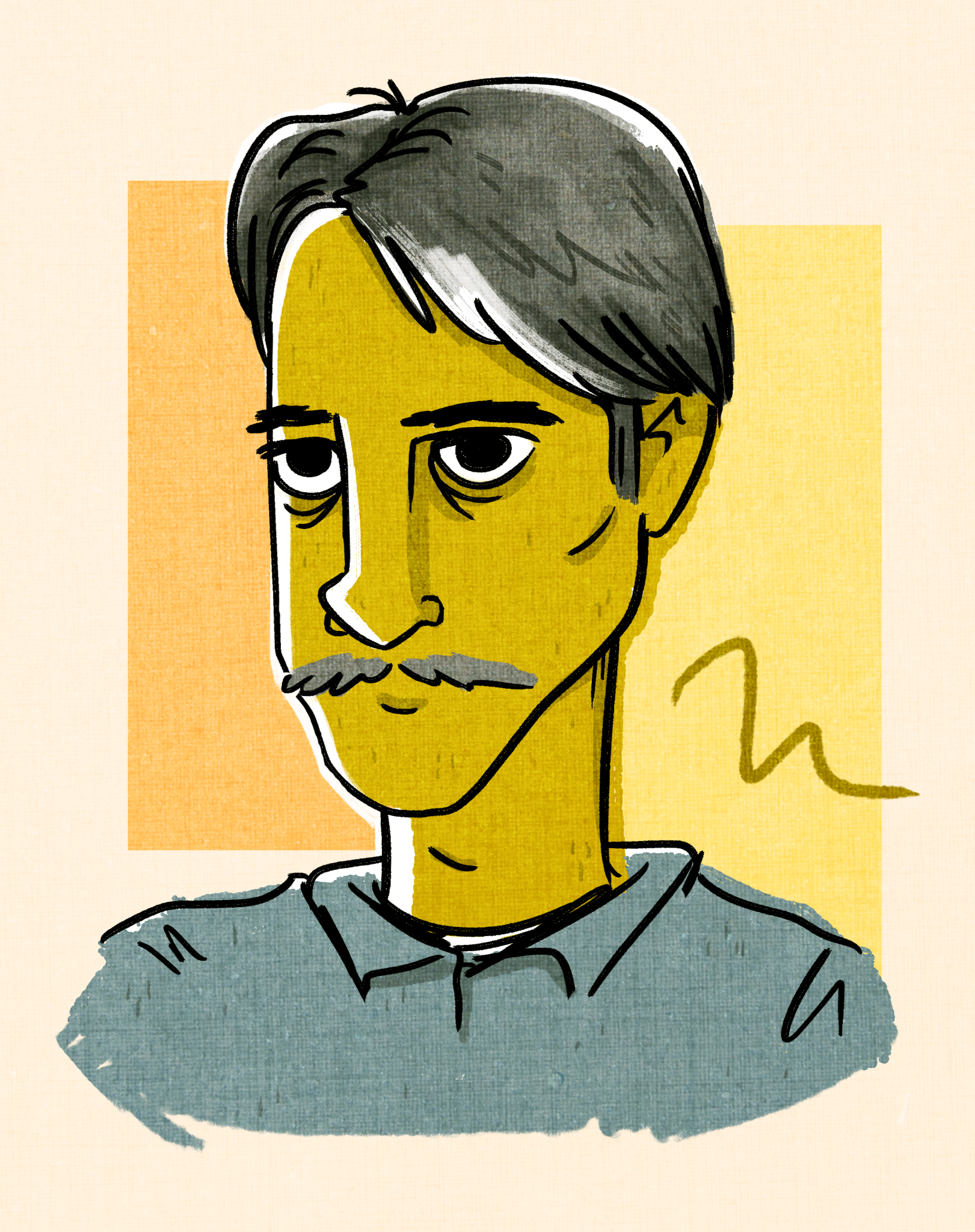On a warm autumn evening, I’m talking with the painter, sculptor, and muralist Jesús Acuña in his studio. He paces the room as he tells me about his latest project, a retelling of the myth of Dédalo and el Minotauro. Despite the archaic subject matter, Acuña’s new project—like so much of his work—concerns contemporary fears. As we talk about global warming, he tells me about a story he read in the news the other day.
In Chiapas or Campeche in southern Mexico—I can’t believe it—there was a church that was covered by water for three hundred, two hundred years. Now, [because the water level is so low], you can see it.
I’ve been reading about Greek mythology and creating these sketches about Icarus—I’m trying to bring Icarus to our contemporary life. You know how Icarus fell down because he got too close to the sun? Now, that is global warming. The humanity that has tried to explore space, planets, anything, has forgotten that the most important thing is that we are living on this planet and that we can destroy it. That’s why I brought him to our contemporary life…We try to fly, but we can still fall.
Acuña’s McKinley Park studio is a reflection of the artist. Charcoal sketches are tacked to the paint-spattered walls; paperbacks and notebooks are stacked on every available surface. As we talk, Acuña tells me about his influences, jumping from Beckmann and Brueghel to Orozco and Diebenkorn without missing a beat. Chagall, he says, is a particular inspiration—the flying silhouettes remind him of his own Icarus motif.
I like to work in abstract. I think I feel much better because it’s more relaxing. I’ve been working for years—at the beginning it’s difficult, but now I like it, because for me it’s very important to find another kind of expression. Abstract elements help me…In the abstract, there’s something people can see many times. In something realistic, you always find the same.
When I started working on clay, I discovered that I didn’t know anything about art. For me, to start working in clay is to [become] an artist. I like it. You explore dimensions. When I work with clay, I understand better the universal art. For me, the basis of art is the clay. I started with painting. I feel bad that I started late with clay, because it makes you change your point of view. You feel different, believe me. It’s another life.
As we talk, Acuña shows me another project he’s working on: a series of clay sculptures modeled after his wife and two sons. There’s a plastic sheet draped over each of the busts (to keep them from oxidizing, he tells me) but even in their unfinished state, they’re fascinating: there’s a timeless and placeless quality about them, as if they’d make just as much sense in a temple as in a gallery.
I studied agriculture in Mexico, [and] later, I studied art. But first, it was agriculture. I realized [ I wanted] to be an artist later on. In Mexico you’ve got to do something—there’s a lot of prejudice from the family, you know, if you don’t make money. But I always believed in my work, and it helped me change my point of view. Here, though, you can’t believe it. People that studied at the Art Institute of Chicago, or in any university—many of them, after they graduate, they go to work in the restaurants. And then, they can’t continue working in art. That’s terrible. It’s part of the system. It’s like slavery: you keep paying and paying and paying and paying. Everything’s getting expensive. It’s business.
But I’m living from my work, you know? I’m always trying to find a new project. Always trying to explore different things. I think the art is a lot of work…but the most important thing is to keep working. I think the projects are coming by themselves, alone. You got to make proposals, and it’s like fishing: I make seven proposals and I only get two or three. So you got to fish more.
Acuña is constantly working. He intends for his Dédalo project to be a “conversation” between different mediums, so he plans to create several paintings and sculptures as well as a range of woodcuts—something new for him. In the meantime, he’s working with Chicago Artists Month to plan an installation for Whittier Elementary School.
I never got afraid of art. On the contrary, it gives me the opportunity to be happy, to better understand life, society…that’s it. I feel very comfortable with my profession. I don’t feel tired; I enjoy what I’m doing. The most important thing is to believe in what you’re doing and keep working. Everything else comes by itself. You can do anything—believe me, anything. Sometimes, if you don’t get something now, you just have to keep faith. It’ll happen later.
The artist is like a worker. You got to keep working everyday. But the difference between the people going to the factory or the company [and the artist] is the studio. The studio is a universe. It’s not a factory—it’s something where every day, you find something new. I like it.
As our conversation draws to a close, Acuña walks over to a table and shows me what looks like a hollow ceramic rock, something he created while staying in Monterrey. In Mexico, he would often drive past a mountain range. With every trip, the peaks would seem to vanish further as new roads were built. “I thought that someday, all would be left is a stone. This is the stone,” he says, and opens it like a geode, revealing a bright blue landscape: clouds, rain, a lightning bolt.

